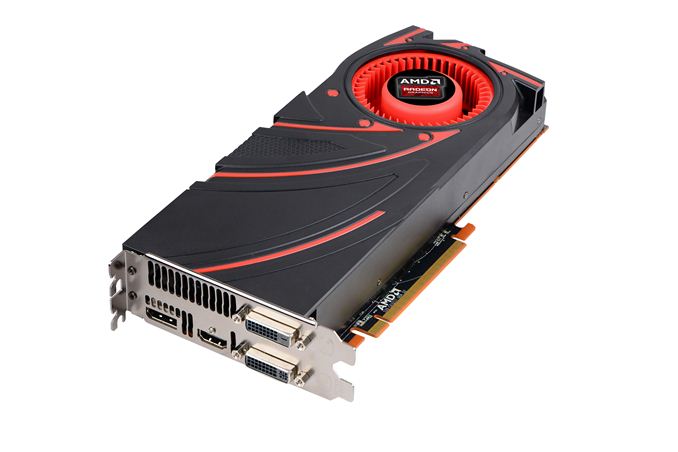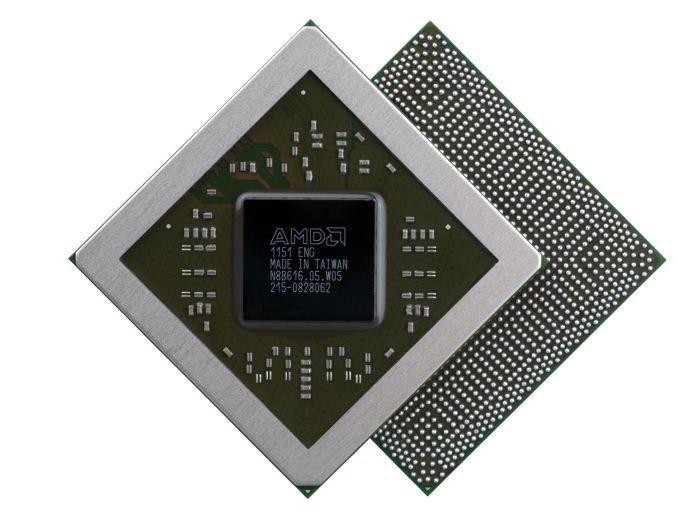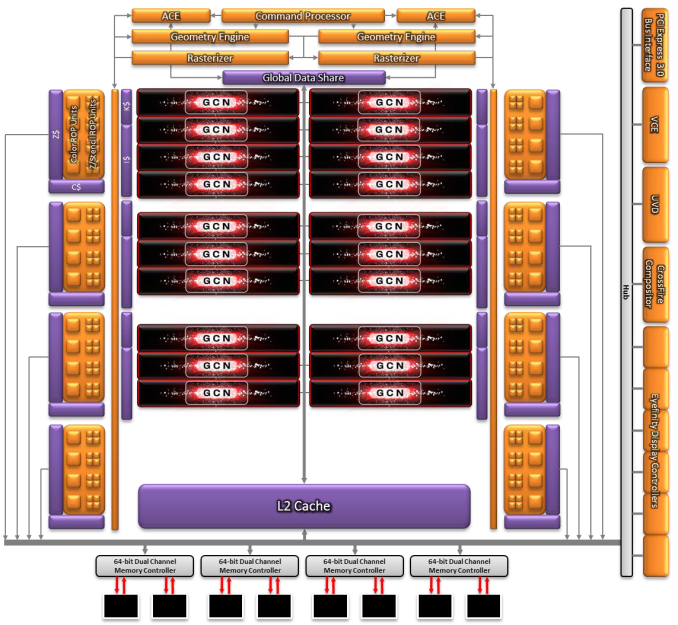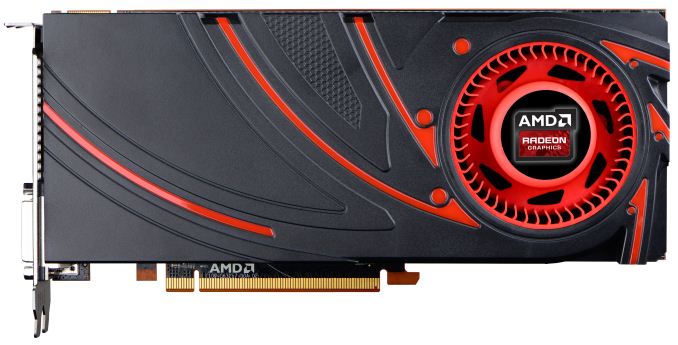The AMD Radeon R9 270X & R9 270 Review: Feat. Asus & HIS
by Ryan Smith on November 13, 2013 12:01 AM EST
The Radeon 200 series was a different kind of launch from AMD than anything we’ve seen from them before. The slow development of the next generation of manufacturing processes from fab partner TSMC has required both AMD and NVIDIA to get a bit creative in how they want to roll out products, along with how they want to promote and position those products. Whereas in previous years we’d seen one or both firms roll out a number of new GPUs, 2013 will be the year where we only see one new GPU from each, and those GPUs were at the high-end. This hasn’t prevented AMD from bringing around new products or bringing down the price-to-performance ratio of their lineup, but it has required a different kind of launch than what they would do in previous years.
For AMD, the new reality of doing another product cycle at 28nm has meant that AMD’s product plans for the end of 2013 and 2014 have involved a lot of shifting of GPUs and prices. GCN is an architecture with long legs, and the GPUs cut from it being equally as long legged. So the company has set forth on a plan to introduce a new high-end GPU for the top of their market (the 290 series), while the mainstream and lower markets will receive new products based on existing GPUs. We’ve already seen the first step of that process with the launch of the Radeon R9 280X, and now we’re ready to take a look at the next step with the Radeon R9 270 series.
The Radeon R9 270 series is composed of two products, the 270X and the 270, with the X indicating the higher performing part in AMD’s new naming scheme. The 270X actually launched almost a month ago – a result of the 200 series launch blast its repurposed GPUs – while we’re just now catching up to the 270 series today, with the launch of the lower tier R9 270. Both of these parts are based on AMD’s venerable Pitcairn GPU, which post-shuffle is being moved from AMD’s $200+ enthusiast cards to their sub-$200 mainstream cards. They are in essence the successors to the 7870 and 7850, the previous video card family that Pitcairn called home.
| AMD GPU Specification Comparison | ||||||
| AMD Radeon R9 270X | AMD Radeon R9 270 | AMD Radeon HD 7870 | AMD Radeon HD 7850 | |||
| Stream Processors | 1280 | 1280 | 1280 | 1024 | ||
| Texture Units | 80 | 80 | 80 | 64 | ||
| ROPs | 32 | 32 | 32 | 32 | ||
| Core Clock | 1000MHz | 900MHz | 1000MHz | 860MHz | ||
| Boost Clock | 1050MHz | 925MHz | N/A | N/A | ||
| Memory Clock | 5.6GHz GDDR5 | 5.6GHz GDDR5 | 4.8GHz GDDR5 | 4.8GHz GDDR5 | ||
| Memory Bus Width | 256-bit | 256-bit | 256-bit | 256-bit | ||
| VRAM | 2GB | 2GB | 2GB | 2GB | ||
| FP64 | 1/16 | 1/16 | 1/16 | 1/16 | ||
| TrueAudio | N | N | N | N | ||
| Transistor Count | 2.8B | 2.8B | 2.8B | 2.8B | ||
| Typical Board Power | 180W | 150W | 190W | 150W | ||
| Manufacturing Process | TSMC 28nm | TSMC 28nm | TSMC 28nm | TSMC 28nm | ||
| Architecture | GCN 1.0 | GCN 1.0 | GCN 1.0 | GCN 1.0 | ||
| GPU | Pitcairn | Pitcairn | Pitcairn | Pitcairn | ||
| Launch Date | 10/08/13 | 11/13/13 | 03/05/12 | 03/05/12 | ||
| Launch Price | $199 | $179 | $349 | $249 | ||
With the R9 270 series AMD is taking a slightly different route than they did with the 280X. The 280X was in part a consolidation of the two 7970 cards into a single middle of the road SKU, and in part a price cut for that performance tier down to $299. But for the 270 series AMD isn’t consolidating anything – there were only two Pitcairn products in the first place – so instead it’s a performance bump coupled with a lesser price cut. By doing this AMD is formally pushing Pitcairn into the sub-$200 market, and at the same time they’re doing so under a new name as to avoid having such a low price attached to the 80/800 sub-series name.
The end result is that the 270X and 270 are a mix of old and new, launching at a lower price. What’s old is of course Pitcairn, while what’s new are higher performance configurations being enabled by slow yield improvements and more significant board design improvements. The entire 270 series is being equipped with AMD’s PowerTune Boost 1.0 technology to enable some basic turbo functionality, while both cards are also receiving higher memory clocks (5.6GHz) that come courtesy of reworked boards designed to maximize the capabilities of Pitcairn’s memory controller.
Diving into matters, we first have the 270X. This is the direct successor to the 7870, designed to offer improved performance within roughly the same power envelope. On the GPU side it has received a minor clockspeed bump from the implementation of PowerTune Boost, pushing the peak clockspeed from 1000MHz to 1050MHz, a 50MHz (5%) bump. More significant is its memory clockspeed bump, which will see the memory clockspeed go from 4.8GHz to 5.6GHz, an improvement of 800MHz or 17%. Otherwise as 7870 was already a fully-enabled Pitcairn part, 270X contains the same 20 CUs and 32 ROPs.
The more significant improvement is for the 270 vanilla (sufferin’ suffixes), which is the successor to the 7850. The 7850 was only a partially enabled Pitcairn product and it shipped at lower clockspeeds then 7870, keeping a significant performance gap between the two products which the 270 series will be closing. Compared to the 7850, 270 will be moving up to a fully enabled Pitcairn part, bringing it up from 16 CUs to 20CUs, offering a straight-up 25% improvement in the amount of shader/texture hardware. Meanwhile it is also receiving a more significant GPU clockspeed bump, from 860MHz to a boost clock of 925MHz, an improvement of 8%. 270 also receives the same memory bus and clockspeed improvements as 270X, so it gets the same 800MHz memory clock increase to 5.6GHz. Consequently 270 stands to gain much more performance over its predecessor than 270X does, with 270 offering anywhere between 8% better performance and 34% better performance depending on whether it’s ROP/geometry-bound or shader-bound.
As for power consumption, both of these parts pick off from where their direct predecessors left off. 270X is an 180W typical board power part just like the 7870, while 270 takes up the mantle as AMD’s top 150W card. The significant spec improvement from 7850 to 270 means that AMD’s performance within the 150W threshold will be improving by quite a bit, which is of significant importance to them and the larger market as a whole since 150W is the cut-off for a number of OEM systems that lack the power headroom necessary to support larger cards.
Meanwhile on a generational basis the 270 series will be partially replacing the 7700 series. The 7700 series launched at lower prices than this – $159 and $109 respectively – so it’s not a straight-up replacement, but it’s close. Because we’re still on the 28nm process though, it means while performance has gone up so has power consumption, something that will be the case across the board for this refresh.
Moving on to pricing and competition, the 270X and 270 hold MSRPs of $199 and $179 respectively. Unlike 280X, which saw a significant price cut versus 7970GE, these are not nearly as significant cuts compared to the outgoing 7800 series, which means AMD is more or less directly competing with itself right now. The narrow price bands in the sub-$200 market mean that these kinds of generational price conflicts are a recurring issue for AMD and NVIDIA, as the last generation products have to be priced low enough to clear off the rest of the stock, even though doing so distorts the overall picture. So for the moment the 7800 series is going to serve as a spoiler for the 270 series, though eventually the stock of 7800 cards will run out and the 270 series will fully take over. Or put another way, one of the purposes of the 270 series will be to formalize the price cuts that the 7800 series has seen over the last year and a half.
AMD’s formal competition will be a mix of NVIDIA cards. NVIDIA isn’t placing anything directly opposite the 270X, but they are going to be close by. Well above the 270X is the GTX 760 at $249 – NVIDIA’s cheapest GK104 card – while between the 270X and 270 is the GTX 660 at roughly $179. For the 270 however this means that it will directly be competing with the GTX 660, as both should retail for roughly the same price, making it a head-to-head battle. Finally below the 270 is the GTX 650 Ti Boost at $149, though it’s primarily meant to compete with AMD’s R7 260X.
Finally on the bundle side, we have some good news that everyone should enjoy. Coinciding with today’s launch of the 270, AMD is instating game bundles for the 200 series. For full details please see this associated pipeline post, but in short the 270 and above are getting Battlefield 4. Battlefield 4 will be seperate from AMD's Never Settle Forever program, but considering the age of the games in the current roster and the sheer popularity of Battlefield, BF4 would have been the first choice for virtually everyone anyhow.
NVIDIA for their part will be continuing their own holiday bundle, which will see the GTX 660 and GTX 760 including Assassin’s Creed IV, Splinter Cell: Blacklist, and a $50 discount on NVIDIA’s SHIELD gaming console. Both the AMD BF4 bundle and the NVIDIA bundle are going to be strong bundles for the moment, but as always the ultimate value of any bundle is up to the buyer.
| Fall 2013 GPU Pricing Comparison | |||||
| AMD | Price | NVIDIA | |||
| $330 | GeForce GTX 770 | ||||
| Radeon R9 280X | $300 | ||||
| $250 | GeForce GTX 760 | ||||
| Radeon R9 270X | $200 | ||||
| Radeon R9 270 | $180 | GeForce GTX 660 | |||
| $150 | GeForce GTX 650 Ti Boost | ||||
| Radeon R7 260X | $140 | ||||













59 Comments
View All Comments
iTzSnypah - Wednesday, November 13, 2013 - link
I'm not sure I like the R9 270. It should have been a cut card ~18CU's. I mean you can edit the BIOS to let up to +50% power limit so the only differentiation of the 270 and 270X (power) can be side stepped rather easily.The only hope is the 270X is binned much much higher than the 270 (to the point where the 270's are dogs), else there really isn't that much reason to buy one.
Also I'm surprised that the ASUS R9 270 wasn't a single 8pin connector.
blanarahul - Wednesday, November 13, 2013 - link
A single 8-pin connector would essentially make it a 270X.Gnarr - Wednesday, November 13, 2013 - link
Are you really complaining that the card is not handicapped enough and that you can get a very powerful card for a low price? And you say that you don't like that you can get this card this cheap?P39Airacobra - Saturday, May 31, 2014 - link
WTH? Really? That is the dumbest thing I ever heard! That is like getting a million dollars and then saying you should have got less. What is wrong with you?I am glad the 270 is just the same as the 270X, I only paid $179 for it, And all I have to do is go into CCC and set my clock from 925mhz to 1050, And bam I got 270X , And with better power efficiency. However I leave it at 925mhz because it has more than enough power to max most games at stock. You can't get a better deal than this right now. Now if AMD can just get their drivers right and keep the artifact problem gone. So far 14.4 stable has no artifacts, But the new 14.6 beta has artifacts in games that require physx, (like Mafia 2) So I just keep 14.4 installed. It's sad that it has been over 2 years and AMD is still having artifact problems in their drivers. This has effected allot of 280/280X users. Some figure out that it is the drivers, And others just returned their cards, It's amazing how nobody wants to admit what the real problem is, It is like they want to worship and praise AMD instead of solving the artifact issue.
The Von Matrices - Wednesday, November 13, 2013 - link
The 270X seems like a pointless card to anyone willing to adjust clock speeds since it is the same GPU as its cheaper sibling, much like the 7970 GHz edition was to the 7970. I remember most 7970s (including mine) easily clocked to 7970 GHz edition speeds with little or no voltage increase. Is the 270 the same in regards to reaching the clock speed of the 270X?kyuu - Wednesday, November 13, 2013 - link
I'm guessing the difference will be binning. So while you might end up with a 270 that can clock up to (or beyond) a 270X, there's a chance you may not if you were unlucky and ended up with lower quality silicon.blanarahul - Wednesday, November 13, 2013 - link
The difference will be TDP. I think the 270 is already operating near it's power limit. But the 270X has a lot of headroom.yacoub35 - Wednesday, November 13, 2013 - link
The right choice would be to get a 7950 Boost for under $200 and skip the 270-series generation which is rebranded lower-level hardware.doggghouse - Wednesday, November 13, 2013 - link
Yeah, the 7950 Boost is a great bargain for now... until the supplies dry up. I managed to grab one for my nephew's new PC for $160 after rebate! It even came with the Never Settle Gold... going to be a great addition to his first PC :)garadante - Wednesday, November 13, 2013 - link
I'm not sure if I'm missing the section that points it out, but what does the asterisk behind the 280X in the graphs represent? Does it represent some sort of caveat or warning that we should be aware of?